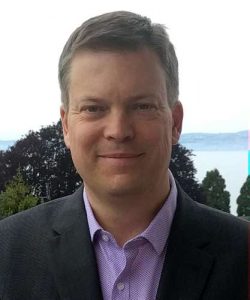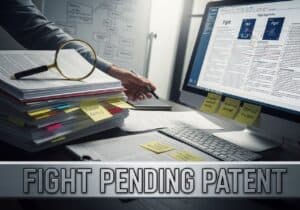¿Sabía que más del 70% de los proyectos ágiles modernos utilizan Scrum? Se trata de un enfoque dinámico cuyo objetivo es entregar rápidamente productos de máxima calidad. Scrum incluye cinco etapas clave: inicio, planificación, realización del trabajo, revisión y lanzamiento. Cada etapa está preparada para un gran trabajo en equipo, flexibilidad y mejora continua de proyectos complejos.
El método Scrum ha cambiado la forma de colaborar de los equipos. Al dividir las grandes tareas en sprints más cortos -normalmente de 2 a 4 semanas-, los equipos pueden centrarse en crear partes del producto que estén listas para funcionar. Además, gracias a las reuniones rápidas diarias y a los gráficos de avance, los equipos controlan su progreso de forma clara y eficaz.
Conclusiones clave
- El Metodología Scrum abarca cinco fases esenciales: inicio, planificación y estimación, aplicación, revisión y retrospectiva, y lanzamiento.
- Los equipos Scrum trabajan en sprints de 2-4 semanas para ofrecer mejoras incrementales.
- Las reuniones diarias ayudan a mantener la claridad y la concentración entre los miembros del equipo.
- Los gráficos desplegables hacen un seguimiento de los avances con respecto al calendario del proyecto.
- Scrum promueve una cultura de mejora continua y de retroalimentación de los usuarios.
Introducción a la metodología Scrum
Metodología Scrum es una parte clave del desarrollo ágil, que cambia la forma en que los equipos gestionan proyectos complejos. Se centra en el progreso paso a paso, la adaptabilidad y el trabajo en equipo. Este Introducción a Scrum explica sus fundamentos y cómo encaja en gestión ágil de proyectos.
¿Qué es Scrum?
Scrum es un estructura para la gestión de proyectos complejos, principalmente en el desarrollo de software. Fomenta la comunicación abierta dentro de los equipos, evitando malentendidos y bloqueos de información. Scrum se basa en cinco valores fundamentales: compromiso, valentía, concentración, apertura y respeto. Esto crea una cultura de mejora continua y trabajo en equipo.
El núcleo de Scrum incluye tres artefactos principales: Lista de productos pendientesSprint Backlog e Incremento. Son vitales para planificar y llevar a cabo bien los proyectos. El sitio Lista de productos pendientes enumera todas las tareas, el Sprint Backlog selecciona las tareas para el siguiente sprint, y el Incremento es el trabajo completado.
Los equipos Scrum, a menudo compuestos por unas 10 personas, incluyen tres roles: Propietario de producto, Scrum Mastery el equipo de desarrollo. Este equipo es lo suficientemente pequeño como para alimentarlo con dos pizzas. Incluye diseñadores, probadores y desarrolladores.
La importancia de la gestión ágil de proyectos
Gestión ágil de proyectos es clave para mejorar constantemente y ofrecer productos de máxima calidad. Se diferencia de los métodos tradicionales porque hace hincapié en la flexibilidad y en las sugerencias de los equipos para satisfacer las necesidades cambiantes de los clientes. Scrum satisface estas necesidades a través de varios eventos como Planificación de sprints y Scrum diario.
Con revisiones frecuentes, los equipos pueden comprobar sus progresos y hacer los ajustes necesarios. Esto ayuda a mantener los proyectos dentro del presupuesto y a tiempo. La flexibilidad de Agile significa que los equipos Scrum pueden cambiar las prioridades de las tareas en función de las nuevas necesidades de los clientes. Esto conduce a lanzamientos de productos más regulares y mejores resultados del proyecto.
"La metodología Scrum permite a los equipos funcionar de forma más eficiente y mantener altos niveles de calidad. Los pequeños pasos y el enfoque práctico iterativo son las claves para conseguir equipos más felices y productivos."
El éxito de Scrum radica en cómo organiza y dirige a los equipos en proyectos complejos sin dejar de ser adaptable. Como parte de gestión ágil de proyectosScrum ayuda a obtener resultados de mayor calidad a través de un proceso definido y cooperativo.
Los beneficios de la metodología Scrum
El beneficios de Scrum son muchas, especialmente para la gestión moderna de proyectos. Hace hincapié en el trabajo en equipo dentro del equipo scrum y se centra en hacer pequeños progresos constantes. De este modo, las organizaciones pueden trabajar con mayor eficacia y estar preparadas para los cambios. Los equipos utilizan sprints cortos, de una a cuatro semanas de duración, para mantenerse flexibles y adaptarse rápidamente a nuevos comentarios o cambios. Esta sección habla de cómo Scrum ayuda con la flexibilidad, el trabajo en equipo y la creación de mejores productos.
Mayor flexibilidad y adaptabilidad
La principal ventaja de Scrum es que los equipos son más flexibles y están más preparados para el cambio. Los equipos tienen sprints cortos, de dos a cuatro semanas, para abordar rápidamente los cambios y utilizar los nuevos comentarios. Este método mantiene el equipo scrum con los objetivos y necesidades cambiantes del proyecto, asegurándose de que el producto final satisface los deseos del cliente. Además, con revisiones de sprint y miradas retrospectivas, los equipos pueden mejorar constantemente, lo que facilita el ajuste y la corrección del rumbo según sea necesario.

Mayor colaboración en equipo
Scrum realmente se centra en un mejor trabajo en equipo. Las reuniones diarias, de un máximo de 15 minutos, ayudan a mantener a todo el mundo en la misma página y poner de relieve cualquier problema. De esta manera, los problemas se ven y se resuelven rápidamente. Las diversas habilidades del equipo conducen a una mejor resolución de problemas, todo gracias al enfoque de Scrum en trabajar en estrecha colaboración. La buena comunicación es clave en Scrum, creando un ambiente de equipo de apoyo y eficiente.
Mejora de la calidad del producto
El enfoque iterativo y paso a paso del marco Scrum conduce a mejora de la calidad de los productos. Mediante controles periódicos como revisiones de sprint y retrospectivas, el equipo puede ver los progresos y descubrir qué hay que mejorar. Al centrarse en el acabado de los segmentos del producto, anteponiendo la función al proceso, el resultado son clientes más satisfechos. Además, como los equipos se gestionan a sí mismos, hay un mayor sentimiento de propiedad y un mayor impulso para innovar, lo que hace que la calidad y la creatividad pasen a un primer plano.
Funciones y responsabilidades
En Scrum, la definición de roles y responsabilidades es clave para el éxito. Los roles-propietario del producto, maestro scrumy el equipo de desarrollo trabajan juntos. Garantizan un trabajo fluido y una mejora continua.
El papel del propietario del producto
El propietario del producto es crucial para gestionar la cartera de productos. Esta lista incluye funciones, correcciones de errores y mejoras. Se encargan de la gestión de las versiones y hablan con las partes interesadas. Su objetivo es garantizar que el producto cumpla los objetivos empresariales.
El papel del Scrum Master
El maestro scrum ayuda al equipo a utilizar bien Scrum. Se centran en ser abierto, el uso de datos reales, y dejar que el equipo se organice. Se aseguran de que el equipo siga los valores de Scrum. También llevan a cabo reuniones diarias de Scrum para mantener a todos informados y sincronizados.
El papel del equipo de desarrollo
El equipo de desarrollo está formado por ingenieros, diseñadores, redactores y programadores. Trabajan juntos para hacer grandes piezas de productos. La Guía Scrum sugiere tener 10 o menos personas para obtener la mejor comunicación y los mejores resultados. El equipo decide cómo trabajar, con el objetivo de mejorar con cada sprint.
- Transparencia: Las reuniones diarias aclaran a todos el trabajo del equipo.
- Autoorganización: Los miembros del equipo pueden decidir sobre su trabajo.
- Colaboración: La estrecha colaboración garantiza la calidad de los productos.
Conocer el roles en scrumes vital para utilizar bien Scrum. Cada rol tiene sus deberes....
Ha leído 33% del artículo. El resto es para nuestra comunidad. ¿Ya es miembro? Conectarse
(y también para proteger nuestro contenido original de los robots de scraping)
Comunidad.mundial.de.la.innovación
Iniciar sesión o registrarse (100% gratis)
Vea el resto de este artículo y todos los contenidos y herramientas exclusivos para miembros.
Sólo verdaderos ingenieros, fabricantes, diseñadores, profesionales del marketing.
Ni bot, ni hater, ni spammer.
PREGUNTAS FRECUENTES
¿Qué es la metodología Scrum?
Scrum es un marco para la gestión de proyectos, utilizado a menudo en el desarrollo de software. Apoya la colaboración en equipo en tareas complejas. El proceso es flexible y se adapta bien a los cambios.
¿Qué importancia tiene la gestión ágil de proyectos?
La gestión ágil de proyectos, como Scrum, se centra en el crecimiento continuo y la flexibilidad. Valora las aportaciones del equipo y su objetivo es ofrecer productos de alta calidad. Este enfoque ayuda a los equipos a adaptarse rápidamente a los cambios y cumplir sus objetivos.
¿Cuáles son las principales ventajas de la metodología Scrum?
Scrum ofrece muchas ventajas. Mejora la flexibilidad y la colaboración en equipo. Los equipos se reúnen a diario y revisan su trabajo con regularidad, lo que da lugar a mejores productos.
¿Cuáles son las funciones de un Product Owner en Scrum?
El propietario del producto guía la visión del proyecto. Clasifica las tareas en función de su importancia y mantiene organizado el backlog del producto. Esto garantiza que el proyecto siga su curso.
¿Qué hace un Scrum Master?
Un Scrum Master apoya al equipo mediante la promoción de Scrum y las prácticas ágiles. Ayudan a resolver problemas que podrían ralentizar el trabajo del equipo.
¿Cuál es el papel del Equipo de Desarrollo?
El equipo de desarrollo se centra en completar las tareas dentro de los sprints. Trabajan en estrecha colaboración para garantizar que cada incremento del producto sea de alta calidad.
¿Qué es un product backlog y por qué es importante?
Un backlog de producto es una lista de tareas que debe realizar el equipo. El propietario del producto establece las prioridades. Esta lista ayuda a planificar los sprints y a mantener el proyecto dentro de los objetivos.
¿Qué implica una planificación eficaz de los sprints?
En la planificación de sprints, los equipos eligen tareas del backlog para trabajar en ellas. Planifican las próximas semanas y fijan objetivos específicos para el sprint.
¿Qué son las reuniones diarias?
Las reuniones diarias son breves encuentros en los que el equipo se pone al día. Hablan de los retos y planifican el día. Esto mantiene a todo el mundo alineado y centrado.
¿Cómo ayuda un diagrama de burndown en Scrum?
Un gráfico de avance muestra el trabajo pendiente a lo largo del tiempo. Permite al equipo conocer su progreso hacia los objetivos del sprint. Esta transparencia ayuda al equipo a cumplir el calendario.
¿Qué es el marco Scrum en la práctica?
Utilizar Scrum significa formar al equipo, establecer roles y empezar con un proyecto piloto. A veces, es necesario realizar ajustes para adaptarse a las necesidades de la organización.
¿Qué son las revisiones de sprints y por qué son importantes?
Las revisiones de sprints implican compartir el progreso con las partes interesadas. Son fundamentales para recibir comentarios y realizar actualizaciones antes de que comience el siguiente sprint.
¿Por qué son esenciales las retrospectivas de sprints?
Retrospectivas de sprints dejar que el equipo evalúe su sprint. Encuentran formas de mejorar y planifican futuros sprints. Esto es crucial para la mejora continua.
¿Qué es la preparación del backlog del producto?
Preparación de la cartera de pedidos significa actualizar y volver a priorizar la lista de tareas pendientes. De este modo, la lista se ajusta a los objetivos del proyecto y responde a los cambios.
¿Qué implica la fase de lanzamiento en Scrum?
La fase de lanzamiento consiste en la preparación final para la entrega. Incluye pruebas e integración para garantizar que el producto cumple los estándares de calidad antes de su lanzamiento.
¿Cómo pueden los equipos gestionar el desbordamiento del alcance en Scrum?
Los equipos gestionan síndrome del lavadero manteniendo una cartera de tareas clara, fijando objetivos definidos y hablando periódicamente con las partes interesadas. La preparación periódica ayuda a adaptarse a los cambios.
¿Cómo pueden los equipos gestionar plazos ajustados en Scrum?
La gestión de plazos ajustados implica priorizar las tareas, establecer objetivos alcanzables en la planificación de sprints y utilizar herramientas como los gráficos de reducción. Las reuniones diarias ayudan a supervisar los progresos.











Estoy totalmente de acuerdo en que la definición de funciones y responsabilidades, junto con una planificación de sprints y una gestión de backlog eficaces, son esenciales para que los equipos sean ágiles y tengan capacidad de respuesta.
Sería interesante que se debatiera más sobre cómo afrontar retos comunes como el desbordamiento del alcance y el agotamiento del equipo.
podría ser útil incluir ejemplos de herramientas o técnicas distintas del póquer de planificación asíncrona
Muy buena lectura. Pero, ¿no es posible que la rígida estructura de Scrums ahogue la creatividad de algunos equipos? Sólo para reflexionar.
Sólo por curiosidad, ¿no sería más eficaz el proceso Scrum si incorporamos los principios Lean?
¿Es Scrum realmente la respuesta a todos los problemas de gestión de proyectos o sólo otra palabra de moda? ¿Es realmente aplicable a todos los sectores?
¿Alguien cree que Scrum está sobrevalorado? Quiero decir, ¡hay otros métodos ágiles igual de eficaces, si no más!
Scrums no está sobrevalorado, sólo mal utilizado. Otros métodos ágiles también tienen sus defectos.
Publicaciones relacionadas
Validación del Proceso IQ OQ PQ: Teoría y Práctica Completas
Las estrategias del “Loco Solitario”, del “First Follower” y del “Fast Follower”
Los 20 Mejores Usos de los Proxies en Ingeniería
Cómo Vender Hielo a los Esquimales (o Estrategias de Marketing)
Greenwashing: Los 15 mejores consejos de un caballero para un engaño exquisito
La mejor manera de luchar contra una patente pendiente